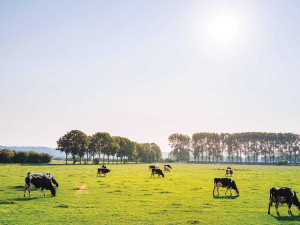Vets: trusted but misunderstood, according to survey
Around 97% of New Zealand pet owners value the care provided by their vet teams, but the broader contribution of animal health professionals to society often goes unseen, a new study has revealed.
 World AMR Awareness Week last week has been a part of global action plan to tackle the growing problem of antimicrobial resistance (AMR).
World AMR Awareness Week last week has been a part of global action plan to tackle the growing problem of antimicrobial resistance (AMR).
Animal owners can help protect life-saving antibiotics from resistant bacteria by keeping their animals healthy, says the New Zealand Veterinary Association.
It says the World AMR Awareness Week last week has been a part of global action plan to tackle the growing problem of antimicrobial resistance (AMR), where pathogens such as bacteria become resistant to critical antimicrobial medicines like antibiotics.
Dr Annabel Harris, chair of the NZVA Antimicrobial Resistance (AMR) Committee, says judicial use of antibiotics is a priority for the animal health sector.
“Bacterial infections that are resistant to antibiotics can affect our pets and our livestock, and transfer between animals and humans and into the environment.
“We need to manage AMR as a One Health issue – that is that humans, animals and the environment are all connected. And we all have a role to play.
“Part of that is preventing the need to use antibiotics by keeping our pets healthy through good nutrition, good hygiene, regular health checks and vaccinations. And when antibiotics are prescribed by a veterinarian it is essential to give them to your pet as directed.”
“We should be proud of that. However, AMR is not going away. Bacteria that become resistant to antibiotics not only go on to reproduce survivors but can buddy up with other bacteria to share that resistant genetic material.
“So, we have to be judicious in how we use antibiotics and focus on the overall health of our animals to ensure these life-saving medicines continue to work as intended.”
Harris says for farmers, managing AMR requires a more holistic approach where antimicrobials like antibiotics are just one part of an integrated disease control programme.
“It’s about careful attention to a range of farm practices, including biosecurity measures, vaccinations, hygiene, disinfection procedures, good animal nutrition, appropriate housing, close herd/flock monitoring and staff/ management training.
“This can feel overwhelming for farmers. Have a chat to your vet. They are trained scientists who stay abreast of new research and are well-positioned to help you work out what is a good plan for you and your operation.”
There was much theatre in the Beehive before the Government's new Resource Management Act (RMA) reform bills were introduced into Parliament last week.
The government has unveiled yet another move which it claims will unlock the potential of the country’s cities and region.
The government is hailing the news that food and fibre exports are predicted to reach a record $62 billion in the next year.
The final Global Dairy Trade (GDT) auction has delivered bad news for dairy farmers.
One person intimately involved in the new legislation to replace the Resource Management Act (RMA) is the outgoing chief executive of the Ministry for the Environment, James Palmer, who's also worked in local government.
T&G Global says its 2025 New Zealand apple season has delivered higher returns for growers, reflecting strong global consumer demand and pricing across its Envy and Jazz apple brands.
President Donald Trump’s decision to impose tariffs on imports into the US is doing good things for global trade, according…
Seen a giant cheese roll rolling along Southland’s roads?